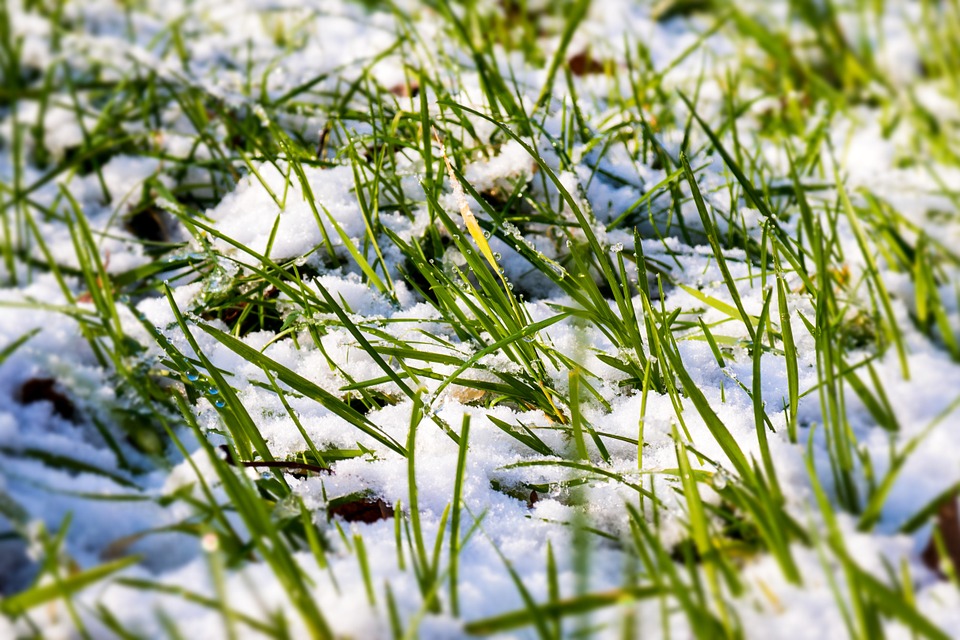Winter is quickly approaching in Camas, Washougal, and Vancouver, Washington. Soon, the Pacific Northwest will be greeted with freezing temperatures and winter storm warnings. As always, winter slows the growing process, however, there are still an abundance of tasks left to accomplish in order to prepare for the oncoming cold months. Here are some tips for preparing your yard for winter.
Mowing
Many of us assume that we must discontinue mowing for the winter. It’s true that there are warm season grasses that go almost completely dormant during the cold months, however, there are plenty of cold season grasses (like fescues and bluegrass) that continue to grow until the ground freezes completely. Considering that most of the grasses that thrive best in Washington State are cold season grasses, there is a good chance that your lawn will continue to grow through much of winter, albeit at a slower pace than spring. Therefore, it is best to keep up with your lawn mowing schedule throughout this time of year. Furthermore, it is important to cut your lawn at the minimum recommended height for your grass-type to ensure your lawn remains healthy year-round.
Aeration
Just before winter is a great time to aerate your lawn. Aerating is a process by which small plugs are pulled from throughout your lawn. Aerating relieves compaction that naturally occurs in our soil throughout the year; compaction can have damaging effects on our lawns, inhibiting growth and suppressing root systems. The holes that are left after the plugs have been lifted allow further penetration of air, moisture, and light, which helps to create a healthier lawn by giving grass the essential nutrients it needs in order to thrive.
Trimming and Pruning
Perhaps one of the most essential tasks to complete during the colder months is trimming and pruning your shrubs, trees, and bushes. Trimming and pruning should be performed whenever necessary, however, during the colder months of winter, most shrubs, trees, and bushes will go dormant and will be less effected by the strain or shock of cutting these plants back. Pruning and trimming have a positive impact and encourage healthy plant growth.
Adding Mulch
Weed growth slows during the winter months, which is great! However, if nothing is done in the areas most effected by weeds, they will come back with a vengeance when the weather warms again. One perfectly organic way of controlling the germination, growth, and spread of undesirable plants is to add mulch. Adding mulch in winter is the optimal time to do so. Mulch, bark dust, or wood chips help to block oxygen and sunlight from reaching undesirable plants inhibiting their growth. Furthermore, mulch helps to build healthy soil, retain moisture (which is still important during the winter months) and also helps to insulate desirable plants against the harsh cold months of winter.
Further Protecting Plants from Frost
Another simple task to consider performing before the cold months is to further protect your desirable plants from the cold weather. Applying mulch, as we mentioned above, is a great way to insulate plants. However, more steps can be taken to further protect your most delicate plants. Covering or wrapping these plants with a plant wrap will help insulate them during cold nights. If you are able, moving these plants into a greenhouse or a raised garden bed will further help to protect these plants even more throughout the winter. Ensuring your plants are protected from frost will not only guarantee the plants will survive winter but will also allow them to thrive at a faster pace.
Removing Leaves
We love our trees here in the Pacific Northwest. With all of our trees, comes an abundance of leaves which beginning dropping in fall, littering our landscapes. If leaves are left to compost on our lawns, they will quickly create unsightly dead patches. Removing these leaves from our lawns as quickly as possible is important to maintaining a healthy lawn. Leaves that have been collected from the lawn can be taken to a recycling center put into a compost pile for later use or used immediately as a mulch to protect other plants from the cold.
Fertilizing
Your lawn subsists on nutrients it has stored throughout the year in order to survive the cold months. Fertilizer adds nutrients to your lawn. Therefore, giving your lawn a boost of nutrients before winter is a great idea, as long as the ground hasn’t frozen. Furthermore, fertilizing will help your lawn bounce back once spring arrives. There are many types of fertilizer, so it is best to do some research when selecting the appropriate fertilizer for your lawn.
Contact Urban Eden Landscaping
As anyone can plainly see, there are a plethora of tasks to complete in order to properly prepare your yard for winter and we’ve only scratched the surface! At Urban Eden Landscaping we work year-round, helping to keep your yard looking its best. If you would like a FREE estimate, then contact us today. We look forward to assisting with your landscape and lawn care needs.

